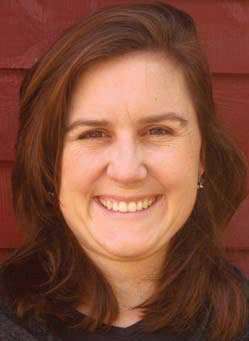So there we were, my friend “Jane” and I, standing in a field of blazing staghorn sumac. The tree next to us was heavily infested with galls, and to Jane’s dismay, I launched into a lecture on the aphid Melaphis rhois. From a single egg, this tiny insect clones itself by the hundreds. The clones grow in the swelling gall all summer; in early autumn, they fly out to make their winter home in moss. Come spring, there’s a new generation of male and female aphids. Romantic rendezvous occur, and the mated females fly back into the sumac trees.
“How cool is that!?” I said. “Cloning, complicated love lives, and two plant hosts?”
“Uh-huh,” said Jane, toggling her jacket zipper.
I decided to liven things up with a prop. I plucked one the biggest galls and ripped it open to reveal the chamber left by the departed aphids. But it was an old gall on a warm day, and the thing exploded in a gray powder cloud of frass that speckled my face and hair. Which delighted my friend, especially after she asked me what frass was and I wheezed out, “Insect poop.”
Jane remembers the moment with fondness. She brings it up whenever I start lecturing her about nature. She still doesn’t know anything about aphids, but her go-to curse word is “frass.”
Communication is tricky. It’s never a sure thing how people will respond to new information. I’m still sometimes surprised by which parts of this magazine most resonate with readers. I’ve been reading through the many responses to the survey we ran this summer, and one of the takeaways is that you really enjoyed the article about black racers. Why? Is it because John Litvaitis is such a skillful writer? Or do you just like snakes?
While there’s still a lot for us to unpack from the survey responses, here are some early results which I find especially gratifying: over 92 percent of those of you who took the survey reported that Northern Woodlands magazine helps you learn about forest stewardship. Even more (95 percent) said that it helps you learn about forest science and natural wonders. 87 percent said that it gives you a greater appreciation for how others relate to forests, and an impressive 55.74 percent – in a group including many non-landowners – said the magazine helps you manage your own land.
That’s a testament to our editorial team and contributors. It’s also reassurance that the magazine continues to serve our nonprofit’s educational mission. Thanks to all of you who make this work possible.


